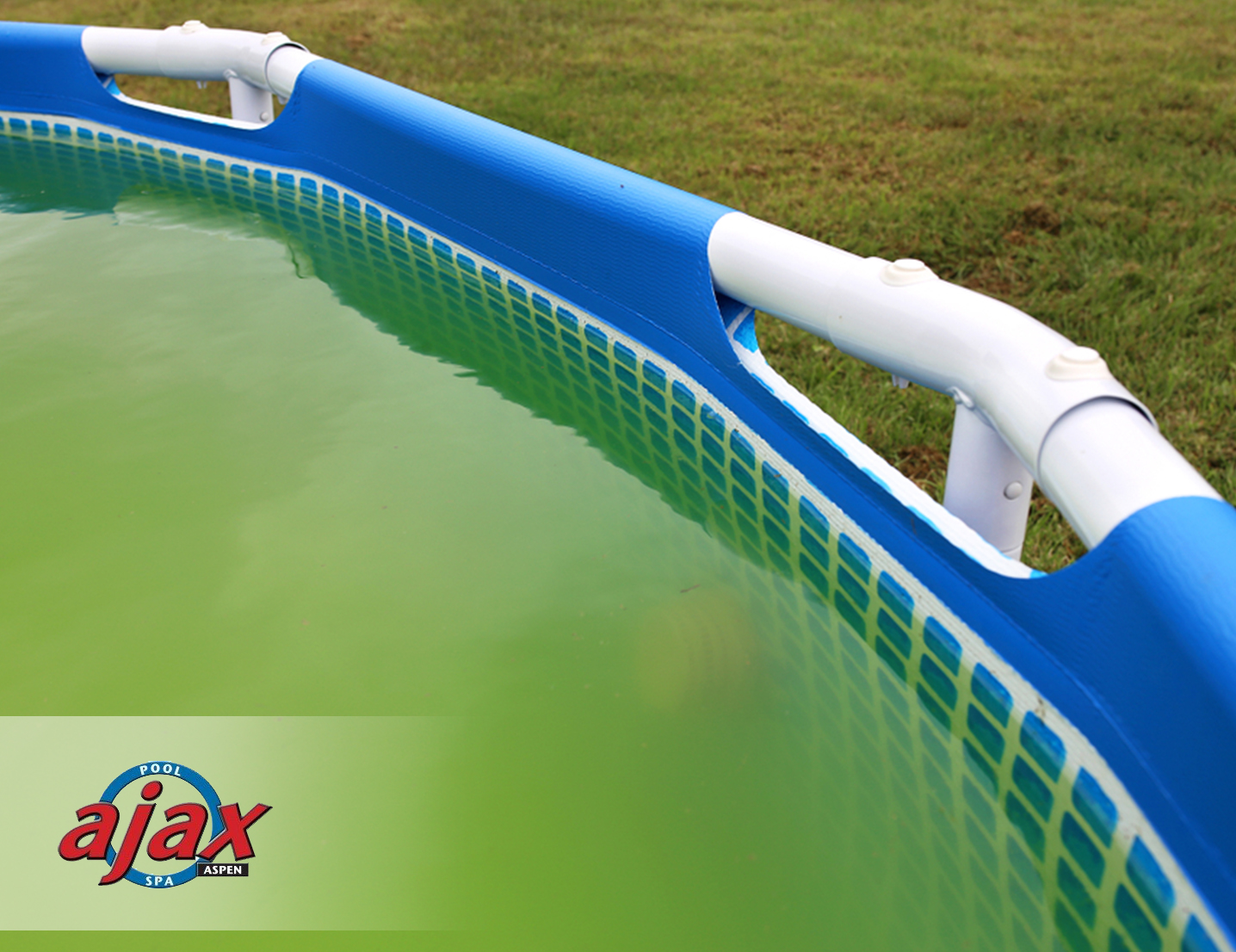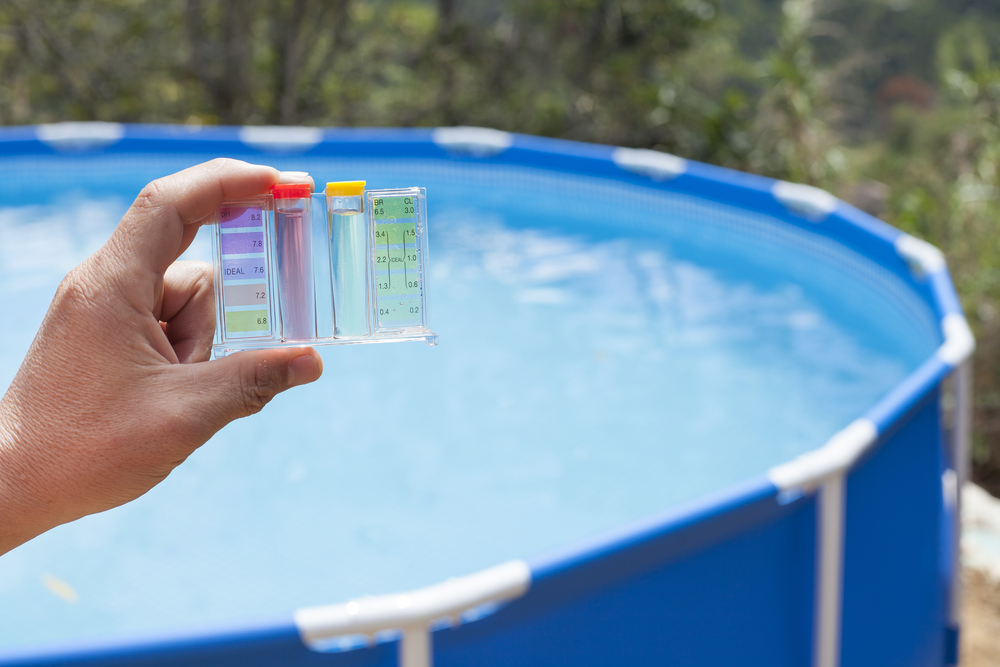Maintaining the right balance of chemicals in a swimming pool is essential for water quality, comfort, and safety. Among the critical parameters to manage is alkalinity.
Understanding Pool Alkalinity and Its Importance
Alkalinity in pool water is measured by the concentration of carbonate, bicarbonate, hydroxide, and other alkaline substances. It’s expressed in parts per million (ppm) and should ideally be maintained between 80 to 120 ppm. Alkalinity acts as a buffer for pH, stabilizing it by neutralizing acids that might otherwise cause fluctuations.
Why Alkalinity Matters
- Protects Pool Surfaces: Low alkalinity can make the water more corrosive, leading to etching and erosion of plaster, grout, tile, and pool equipment.
- Maintains Balanced pH: Proper alkalinity prevents rapid pH changes, which can discomfort swimmers and damage pool surfaces.
- Enhances Pool Comfort: Unbalanced alkalinity may lead to skin and eye irritation and a less enjoyable swimming experience.
Signs of Low Alkalinity in a Pool
Recognizing the symptoms of low alkalinity can help pool owners address the issue before it escalates:
- Fluctuating pH Levels: If you notice that your pool’s pH level changes rapidly, it may be due to insufficient alkalinity.
- Cloudy Water: Low alkalinity often results in cloudy pool water due to the lack of a stable pH environment.
- Corroded Pool Surfaces: Corrosion or erosion of pool plaster, tile grout, and metal equipment can occur if alkalinity is low.
- Swimmer Discomfort: Low alkalinity may cause eye irritation, skin itchiness, and a dry feeling after swimming.
How to Test Pool Alkalinity
Testing the alkalinity level in your pool is simple, and it’s recommended to check it weekly:
- Use Test Strips: Test strips are convenient and readily available. Dip a strip into the water and compare the colors to the reference chart provided.
- Digital Testers: These provide more precise readings and are easy to use, though they’re generally more expensive.
- Liquid Test Kits: These kits are also accurate and provide detailed information about chemical levels.
Steps for Increasing Alkalinity in Your Pool
If your pool’s alkalinity falls below the recommended 80-120 ppm range, take the following steps to bring it back to the ideal level.
1. Calculate the Pool Volume
To determine how much alkalinity increaser you’ll need, first know your pool’s water volume in gallons. This will help ensure that you’re adding the appropriate amount of chemicals.
2. Choose an Alkalinity Increaser
The primary compound used to raise alkalinity is sodium bicarbonate, also known as baking soda. Commercial alkalinity increasers are also available, typically labeled as “Alkalinity Up” or “Alkalinity Increaser,” and contain sodium bicarbonate as the main ingredient.
3. Measure the Required Amount
- For a Minor Increase: If you need to raise alkalinity by about 10 ppm, add 1.5 pounds of sodium bicarbonate per 10,000 gallons of water.
- For a Larger Increase: If you need to raise it by more than 10 ppm, calculate the amount based on the pool’s volume and add it in stages.
4. Distribute the Chemical Evenly
- Spread the measured amount of sodium bicarbonate around the perimeter of the pool.
- For the best results, ensure that the pump is running to help disperse the chemical evenly.
5. Allow the Pool to Circulate
After adding the sodium bicarbonate, let the pool’s circulation system run for several hours to ensure thorough distribution. Retest the water after a day to confirm if the alkalinity has reached the desired range. Repeat the process if further adjustment is needed.
Maintaining Alkalinity in Your Pool: Tips and Best Practices
Once you’ve achieved the desired alkalinity level, regular maintenance is crucial to keep the balance stable. Here are some tips to maintain healthy alkalinity and prevent fluctuations:
Regular Testing
Testing alkalinity weekly is essential, especially if your pool is exposed to heavy use, environmental factors, or water changes.
Adjust pH and Alkalinity Together
Alkalinity and pH levels are closely connected, so adjusting both simultaneously can help you reach a balanced state more efficiently. Always adjust alkalinity first, as it stabilizes pH and minimizes sudden shifts.
Avoid Overusing Acidic Cleaners
Using acidic cleaners can lower alkalinity and disrupt pH balance. If your alkalinity level frequently drops, consider switching to less aggressive cleaning products and ensure that any acid-based chemicals are diluted.
Limit Water Replacement
Refilling or partially draining your pool can affect alkalinity. If water replacement is necessary, test the alkalinity of both the pool and the replacement water beforehand and make any necessary adjustments.
Handling Common Issues When Raising Alkalinity
Sometimes, even with careful application, you may encounter challenges. Here are solutions to common issues:
High pH After Alkalinity Increase
Raising alkalinity may cause a temporary spike in pH. This is normal, and the pH should stabilize as the sodium bicarbonate fully dissolves. If the pH remains too high, consider adding a small amount of pH reducer to bring it back in line.
Cloudy Water After Adding Alkalinity Increaser
Cloudiness can result from undissolved sodium bicarbonate or improper distribution. Running the pump for several hours usually clears the water. If cloudiness persists, check your filtration system and backwash if necessary.
Slow Changes in Alkalinity Levels
If adding an alkalinity increaser doesn’t seem to have an immediate effect, it may be due to high levels of dissolved solids, particularly in older pools. In these cases, adding a higher concentration of sodium bicarbonate and ensuring proper circulation should gradually restore balance.
The Benefits of Keeping Pool Alkalinity Balanced
Maintaining the correct alkalinity level not only improves the quality of your pool water but also helps extend the lifespan of your pool equipment and surfaces. Balanced alkalinity also reduces the need for frequent pH adjustments, which can save time, money, and effort in the long run.
Balanced water chemistry:
- Reduces Maintenance Needs: You’ll spend less time troubleshooting chemical issues.
- Creates a Safer Environment: With stable alkalinity, the pool environment is safer and more enjoyable.
- Prolongs Equipment Life: Proper chemical balance protects filters, heaters, pumps, and other equipment from corrosion and damage.
Working with a Professional to Maintain Pool Alkalinity
For many pool owners, balancing chemicals can feel like a science experiment. If you’re unsure about managing alkalinity and other water chemistry, working with a pool care professional can relieve much of the hassle and ensure your pool remains inviting and pristine.
Ajax Pool & Spa Aspen offers a range of services, including chemical testing, balancing, and product recommendations. With expert help, you’ll enjoy peace of mind knowing your pool is being cared for by professionals who understand the unique needs of Aspen’s climate.
Ajax Pool & Spa Aspen Is Here to Help
If you’re in the Aspen area and want high-quality pool and hot tub products to keep your water balanced and sparkling, Ajax Pool & Spa Aspen is here to help. We offer expert guidance and a range of products to make pool maintenance straightforward. Contact us today for reliable pool and spa solutions designed to keep your property in top shape year-round.

Is your swimming pool looking green and nasty? Swimming in a murky green pool isn’t fun, let alone looking at it. Worse, dirty water can cause swimming-related illnesses. Fortunately, you don’t have to drain all the water and start over again. Basic chemistry and filtration techniques can help you get your pool back in shape.
What Makes the Swimming Pool Turn Green?
Pool algae turn the pool green. Low chlorine levels in the pool create a conducive environment for algae to blossom. The pool turns light green when the algae begin to take hold and deep green when they bloom and take root. Besides chlorine, other chemicals are responsible for maintaining the optimum conditions of the water. An imbalance of such chemicals also leads to algae growth in the pool.
Adding chemicals and ensuring they are well-balanced can sometimes be frustrating and cost-intensive. The good news is you can get professional services from Ajax pool and Spa.
In this post, you will learn how to keep your pool clean, safe, and balanced all the time and save hundreds of money. The aim is to ascertain you spend a lot of time swimming, not cleaning or worrying about the algae condition of your pool!
-
Check the Condition of the Water in the Pool
Before clearing the algae from your pool, determine whether your water chemistry can be fixed. In severe cases where the pool is too green and almost turning black, the best measure is to:
- Drain all the water
- Acid wash the pool
- Refill the pool
Generally, if you can look and see six to eight inches below the surface of the water, that water is redeemable; it can be treated chemically.
-
Brush the Pool Floor and Walls
Use a wide, heavy-duty pool brush to clean and scrub pool walls, floors, steps, and other surfaces where algae cling. To clean hard-to-reach surfaces, use heavy-duty 360-degree round brushes that reach every nook. Note that algae are stubborn and tough to remove. Use algae brush to make your work easier. In the end, ensure all the algae is gathered and suspended in the pool to make it easier for chlorine to kill and eliminate them.
-
Test Water Acidity and Alkaline Levels
With the help of a liquid test kit or a test strip, test the alkalinity and pH level of the pool. The standard pH level is between 7.4 to 7.6. If the pH is higher, use a gallon of muriatic acid. The acid will make the water a little acidic. The alkalinity level, on the other hand, should range between 100 to 150 parts per million (ppm).
If the alkalinity and pH level is too high, adjust them downwards to optimum levels. Test the water again after the adjustment to ensure you’re within the perfect range.
-
Shock Your Pool with Chlorine or a Suitable Sanitizer
Once you obtain an optimum pH and alkaline balance, shock the pool to kill algae. Shocking means using high levels of chlorine to clear pool algae. Eliminating algae and pool sanitation is the key activity in pool shocking. Calcium hypochlorite(granular chlorine) has a high chlorine concentration and will kill the algae pool very quickly. It’s economical to buy a 25-pound container because you can utilize the remainder for the future. Calcium hypochlorite is also advantageous since it dissolves quickly, kills bacteria, and controls contamination in the pool. Use a shock containing 70 to 80% chlorine for best results.
After you shock your pool, run your filter for eight to 24 hours to ensure the water is completely clear. The choice of a filter matters a lot. You can use; sand filters, cartridge filters, or diatomaceous earth (DE) filters. You can then use a pool clarifier to clear the algae more quickly or rerun the filter for a whole day to remove all the dead algae and ensure the shock has dispersed throughout. However, if the pull is still green, shock it again and repeat the filtration process.
-
Re-Test the Water Again and Adjust the Pool Chemicals
When your pool is cloudy blue, or clear, try re-testing the water again. The testing ensures the optimum pH, alkalinity, chlorine levels, and calcium hardness. When you have added all the required chemicals, test the pool again to ensure you have the right balance.
How to Keep Algae Off Your Pool
Now that you have a clear pool again, you must ensure it remains like that. The only sure way to do so is to maintain proper sanitizer levels. Test your pool frequently, once a week, or daily depending on how often you use it. Other tips to keep algae at bay include:
- Use a water clarification solution.
- Have a reliable chlorinating system; chlorine should always be in the water. Using a tablet of chlorine once a week has proven effective.
- Clean your filters appropriately before using them.
How Often Should You Clean Your Pool Filters?
- Backwash sand filters once every two weeks.
- Clean cartridge filters after every three to four weeks
- Backwash diatomaceous earth (DE) once a month.
How about Pool Phosphates?
Phosphates are food for algae. Therefore, some pool owners argue that you should remove them to control algae growth. However, removing phosphates from any environment is like clearing dust particles from the air. It’s impossible to clear phosphates from the pool. Forget about eliminating pool phosphates and concentrate on sanitation, regular maintenance checks, and testing.
Consult Pool Cleaning Experts
Maintaining your swimming pool creates more time to enjoy swimming and reduces anxiety. At Ajax Pool and Spa, we offer you maintenance and chemical services as often as needed. Text us today at 239 225 8626, call us at 970 279 5253, or reach us online. We will gladly solve your pool issues and ensure you enjoy swimming in crystal clear and safe water.

Knowing how to raise pH in a pool is an art. While there are some simple instructions that need to be followed, the process is actually not all that difficult. Colorado homeowners who are looking to address any pH-related concerns in their at-home pools would do well to read on and learn more.
When Does The pH Level Need To Be Adjusted?
Knowing when the pH level has to be altered is very important. According to the experts, the level cannot drop below 7. If this happens, the homeowner is risking severe and costly damages. The surface of the pool will be damaged and chlorine loss may also take place. Use an electronic meter or a liquid test kit to check the levels on a consistent basis. The sample should be drawn from the middle of the pool, in a clean bottle.
Otherwise, the skimmers and return jets could compromise the results. Liquid test kits tend to offer the most accurate results, so bear that in mind. Digital meters are the most expensive of all, but they are typically worth the investment. Test strips should only be used in a pinch.
How Can The Pool’s pH Level Be Altered?
If the pH level is not adjusted, the pool equipment can become corroded. Skin and eye irritation also become far more common in these instances. That is why it is important to alter the pH level as soon as problems occur. No one wants cloudy water or any of the other associated nuisances that take place in these instances. As soon as the chemistry levels have been tested, there are a few follow-up steps that need to be taken.
The homeowner must know how many gallons their pool holds before they can proceed. There is no reason to panic if the homeowner does not have a number at the ready. A little bit of simple math is all that it takes. If the pool is square or rectangular, the formula is as follows: length x width x depth x 7.5. The formula for round pools is diameter x diameter x depth x 5.9.
The chemicals now have to be measured. Soda ash will raise the pH levels, as well as the total alkalinity in the pool. 6 ounces are required for each .2 pH bump that is needed to raise 10,000 gallons of water. In some instances, the homeowner may need to add a bit more, so take it on a case-by-case basis. When it comes time to add the chemicals, make sure that the bucket is clean.
Clean water is needed, too. From there, add the soda ash to the water and slosh it around a bit. This will ensure a proper mixture before it is added to the pool. Pour around the pool’s perimeter for best results. Keep the pump going while the soda ash mixture is being added. Otherwise, it may not circulate through the water properly. Finally, it will be time to check the pool once again.
Wait for at least an hour before testing the pool’s pH levels and alkalinity again. Are the levels back where they are supposed to be? If so, that means that the homeowner’s job is complete. If not, that means that the process needs to be repeated until the proper pH range has been reached. The water may be a bit cloudy when the job is over, but it should clear up within a few hours.
Test other levels if the problem persists. Chlorine and calcium hardness levels may also need to be adjusted in these instances. The pool could also be unclean. If leaves and debris are not cleaned away in a timely manner, this can cause the pH levels to start lacking. Make sure that the pool is as clean as possible before testing.
If there are any further questions about the pool cleansing process, the experts at Ajax Pool and Spa are always on hand and ready to help. In addition to working tirelessly to ensure the cleanliness of their pool, Colorado homeowners should always be ready to contact the experts if they are having any added issues. They will have your pool looking its best in no time!


